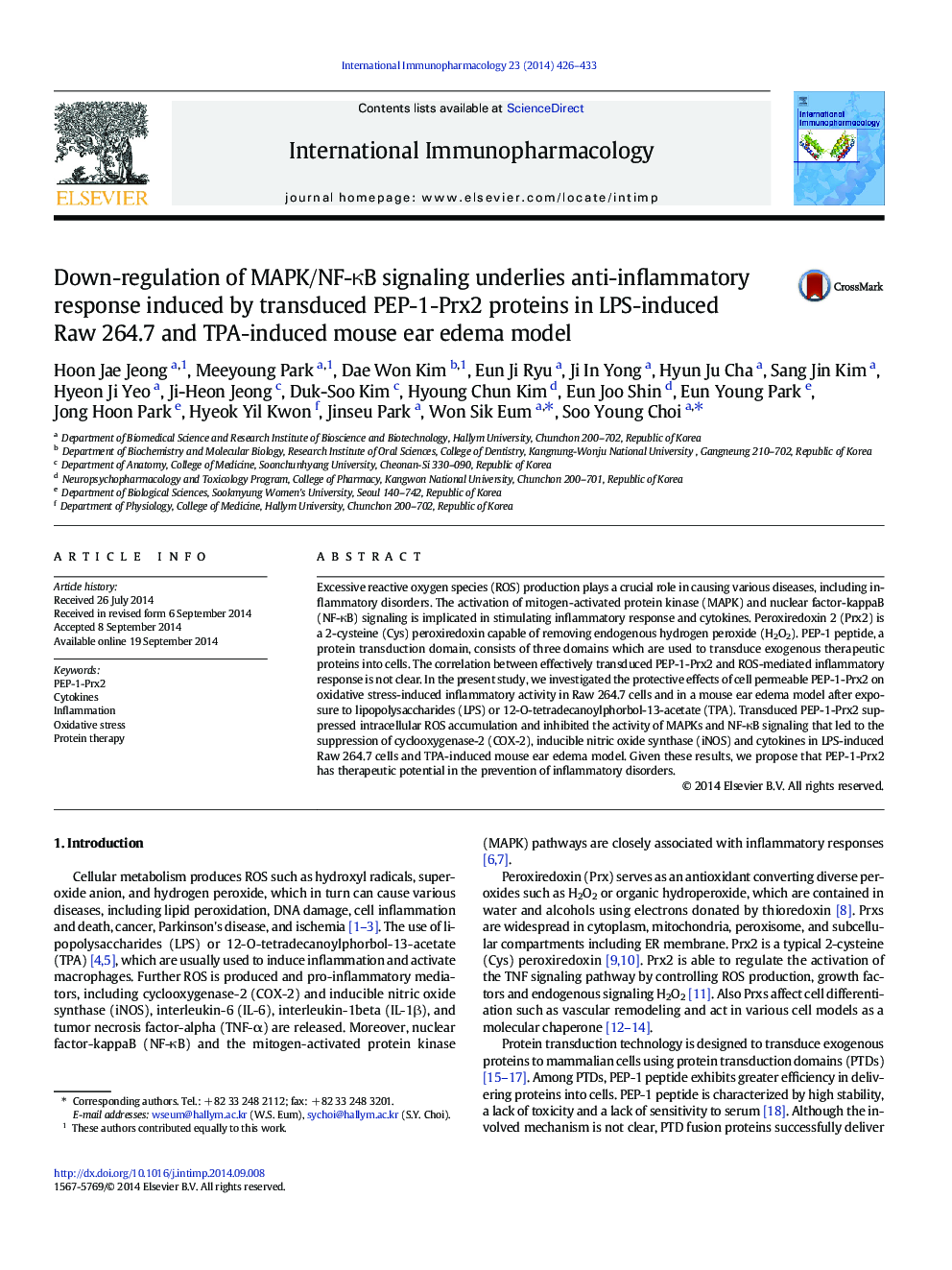| Article ID | Journal | Published Year | Pages | File Type |
|---|---|---|---|---|
| 5832538 | International Immunopharmacology | 2014 | 8 Pages |
â¢Transduced PEP-1-Prx2 ameliorates inflammatory response in LPS exposed cells.â¢PEP-1-Prx2 suppressed cellular ROS levels.â¢PEP-1-Prx2 inhibits MAPKs and NF-κB activation.â¢PEP-1-Prx2 inhibits inflammation response in vitro and in vivo.â¢PEP-1-Prx2 can be a therapeutic agent for disorders related to inflammation.
Excessive reactive oxygen species (ROS) production plays a crucial role in causing various diseases, including inflammatory disorders. The activation of mitogen-activated protein kinase (MAPK) and nuclear factor-kappaB (NF-κB) signaling is implicated in stimulating inflammatory response and cytokines. Peroxiredoxin 2 (Prx2) is a 2-cysteine (Cys) peroxiredoxin capable of removing endogenous hydrogen peroxide (H2O2). PEP-1 peptide, a protein transduction domain, consists of three domains which are used to transduce exogenous therapeutic proteins into cells. The correlation between effectively transduced PEP-1-Prx2 and ROS-mediated inflammatory response is not clear. In the present study, we investigated the protective effects of cell permeable PEP-1-Prx2 on oxidative stress-induced inflammatory activity in Raw 264.7 cells and in a mouse ear edema model after exposure to lipopolysaccharides (LPS) or 12-O-tetradecanoylphorbol-13-acetate (TPA). Transduced PEP-1-Prx2 suppressed intracellular ROS accumulation and inhibited the activity of MAPKs and NF-κB signaling that led to the suppression of cyclooxygenase-2 (COX-2), inducible nitric oxide synthase (iNOS) and cytokines in LPS-induced Raw 264.7 cells and TPA-induced mouse ear edema model. Given these results, we propose that PEP-1-Prx2 has therapeutic potential in the prevention of inflammatory disorders.
